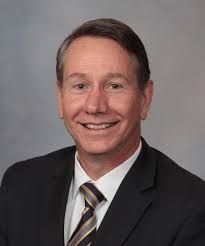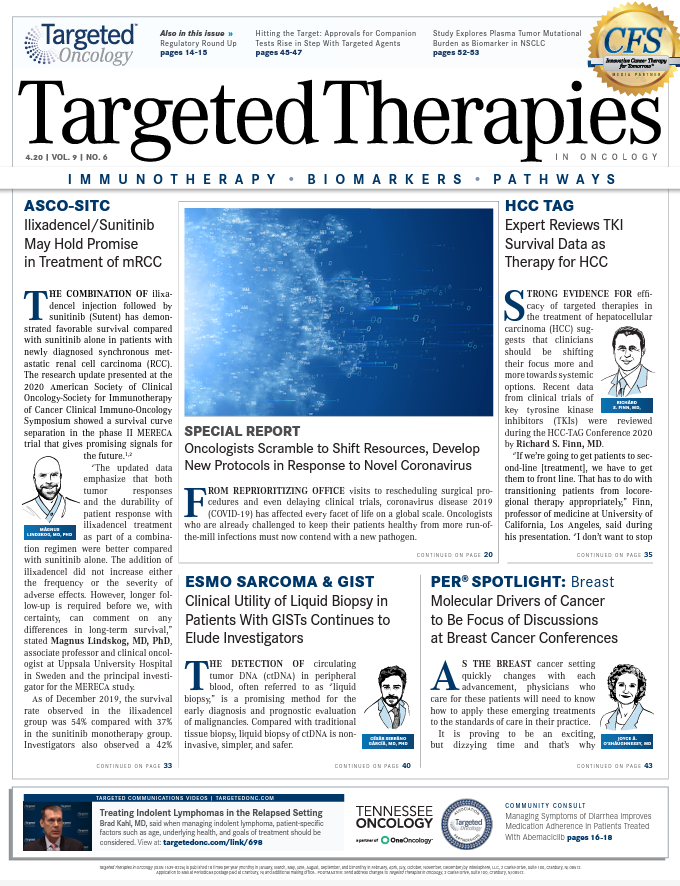Modest Updates to T-Cell Lymphoma Guidelines Reflect Changes in Regimens and Scans
"T-cell lymphomas are a heterogeneous group, and there is an opportunity to further educate the community oncologist on these specific issues."

Providing optimal care to all patients with cancer is a goal among all oncologists, but that objective is especially important in rare cancers. Community oncologists may infrequently encounter a patient with T-cell lymphoma in their practice; nonetheless, providing the latest information about the disease entity, as well as the appropriate workup, remains a key educational objective of the National Comprehensive Cancer Network (NCCN).
Stephen Ansell, MD, PhD, professor of medicine at the Mayo Clinic Cancer Center in Rochester, Minnesota, discussed broad changes related to managing T-cell lymphoma. His points included the latest guidelines updates, a key abstract presented during the 2019 American Society of Hematology (ASH) Annual Meeting, and the challenges associated with limited interferon availability to treat cutaneous T-cell lymphoma.
“T-cell lymphomas are a heterogeneous group, and there is an opportunity to further educate the community oncologist on these specific issues,” Ansell, who is also vice-chair of the NCCN Guidelines for T-Cell/Primary Cutaneous Lymphomas Panel, said in an interview with Targeted Therapies in Oncology.
Guidelines Update
Ansell noted the addition of an overview page in the section of the guidelines focused on breast implant–associated anaplastic large cell lymphoma. This overview provides updated definitions, diagnosis, andgeneral principles of managing breast implant–associated anaplastic largecell lymphoma, including therapy goals.1
Theguidelines recommend a multidisciplinary team approach that involves specialists in lymphoma oncology, surgical oncology, hematopathology, and plastic surgery. Because the disease is rare, the FDA recommendsreportingcases tonational disease registries for tracking of cases.
Goals of therapy should include complete surgical resection of the implant and breast reconstruction. In the local disease relapse setting, patients may require re-excision surgery alone without requiring systemic therapies.
An overview page that includes an updated definition of large granular lymphocytic leukemiahasbeenincludedinthelatestiteration of the guidelines. This indolent T-cell lymphoproliferative disorder shares significant clinical and pathophysiologic overlap with autoimmune syndromes. Large granular lymphocytic leukemia is also often diagnosed concurrently with rheumatologic disease, including rheumatologic arthritis and systemic lupus erythematosus. The differential diagnosis includes aggressive natural killer-cell leukemia and hepatosplenic T-cell lymphoma.
“The focus of this section of the guidelines highlights the immunophenotype associated with this disease,” Ansell said. “We emphasized in greater detail that the autoimmune aspect of this disease needs to be part of the management strategy.”
Key Abstract
During the 2019 ASH Annual Meeting, final results of a prospective randomized, multicenter clinical trial were presented. The trial evaluated and compared the efficacy and safety of the DDGP regimen (dexamethasone, cisplatin, gemcitabine, and peg-asparaginase) versus the SMILE regimen (dexamethasone, methotrexate, ifosfamide [Ifex], L-asparaginase, and etoposide) in patients with newly diagnosed extranodal natural killer/T-cell lymphoma (ENKTL; NCT01501149).2
In the past, patients who were diagnosed with advanced-stage ENKTL demonstrated poor survival and low response to conventional CHOP-like chemotherapy(cyclophosphamide, doxorubicin, vincristine, and prednisone), with a 5-year overall survival rate of only 30%. The safety profile associated with the SMILE regimen further limits its clinical use, demonstratingthe need for more effective treatments.
Eighty-seven patients with newly diagnosed ENKTL in stages III/IV and an ECOG performance score of 0 to 2 were enrolled in9 centers in China. Patients were randomized to receive either the DDGP regimen (cisplatin 20 mg/m² on day 1-4, dexamethasone15 mg/m2 on days 1-5, gemcitabine 800 mg/m2 on day 1 and 8, peg-asparaginase 2500IU/ m2 on day1; 21 days per cycle)or the SMILE regimen (methotrexate 2 g/m2 on day 1, dexamethasone 40 mg/m2 on days 2-4, ifosfamide1500 mg/m2 on days 2-4, L-asparaginase6000 U/m2 on days 3-9, etoposide100 mg/m2 on days 2-4; 21 days per cycle) for up to 6 cycles until disease progression, unacceptable toxicity, or patient rejection.
The primary end point was progression-free survival (PFS) and secondary end points were overall response rate and overall survival (OS).
At a median follow-up of 41.5 months, the median PFS and OS in the DDGP group had not been reached, whereas the median PFS and OS in the SMILE group was 6.83 months and 75.2 months, respectively. The 3-year PFS rate and 5-year OS rate in the DDGP group were higher than in the SMILE group (56.6% vs 41.8% for 3-year PFS,P =.004; 74.3% vs 51.7% for 5-year OS,P =.02).
There was no difference in the complete remission rate observed between the 2 groups, but the overall response rate in the DDGP group was higher than in the SMILE group (90.0% vs 60.0%;P =.002) (TABLE 2).
Regarding safety, investigators reported that nonhematologic grade 3/4 toxicities including elevatedtransaminase (P =.027) and mucositis (P <.001) were higher in the SMILE group than in the DDGP group. The investigators noted that the DDGP regimen produced prolonged survival, better tolerability, and safety than the SMILE regimen in patients with newly diagnosed advanced ENKTL.
“The gemcitabine/cisplatin-based regimen showed a favorable outcome compared with SMILE, which is quite toxic,” said Ansell. He did caution that the recent study was somewhat smallerandcouldbeunderpowered.“Nonetheless, it is a relatively easy regimen to administer, and therefore should be listed as a potentially preferred regimen in the guidelines.”
Limited Availability of Interferon
Ansellnoted thelimited availability ofinterferon. The immunotherapy is used to treat patients with cutaneous T-cell lymphoma.
“It’s not commonly used in a lot of settings, and companies are making it less available than it has been in the past,” said Ansell. “Availability of the drug has been an issue,”he added.
The challenge for oncologists is how best to provide care when the agent is not so readily available. The guidelines suggest the use of pegylated-interferon versus regular interferon when availability is a challenge.
To improve the oncologist’s ability to perform a thorough workup on the patient, Ansell said the classification regarding the use of positron emission tomography (PET) scans was updated from “useful” to “essential.” He said these diseases require a good understanding of where the disease is located, which has an effect on disease management.
“I think oncologists were having difficulty getting reimbursement for PET scans, only being reimbursed on select instances or cases. It was thought that PET scans should be moved to the ‘essential’ category across the board,” Ansell said. Because the skin is involved and affected in many cases of the disease, assessing the extent of disease with a CT [computed tomography] scan poses a challenge and a PET scan would be more informative.
“For the most part, the updates to the guidelines were modest; nonetheless, it’s important that oncologists have the latest updates so they can provide their patients with optimal care,” Ansell concluded.
References:
1. NationalComprehensiveCancerNetwork.NCCNClinicalPractice Guidelines in Oncology. T-cell lymphomas. Version 1.2020.bit.ly/2POnKI6. Published January 6, 2020. Accessed March 5, 2020.
2. Wang X, Zhang L, Liu X, et al. Efficacy and survival in newlydiagnosed advanced extranodal natural killer/T-cell lymphoma: a randomized, controlled, multicenter and open-labled study with DDGP regimen versus SMILE regimen.Blood. 2019;134(suppl 1; abstr 463). doi:10.1182/blood-2019-127811.

Survivorship Care Promotes Evidence-Based Approaches for Quality of Life and Beyond
March 21st 2025Frank J. Penedo, PhD, explains the challenges of survivorship care for patients with cancer and how he implements programs to support patients’ emotional, physical, and practical needs.
Read More